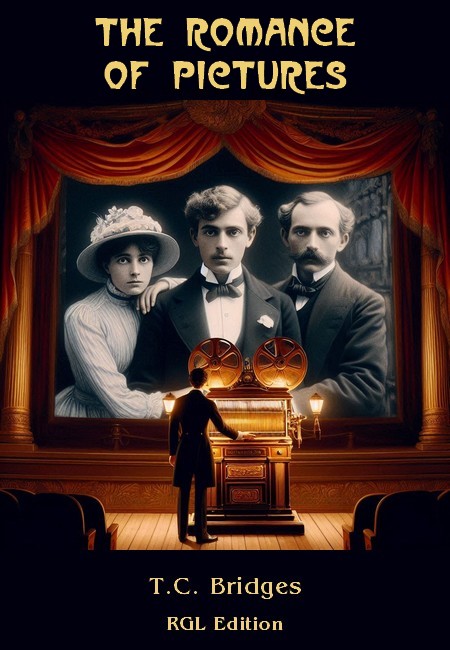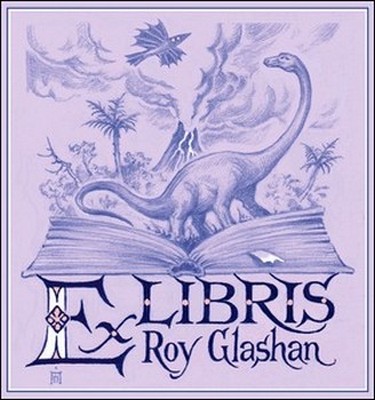
RGL e-Book Cover
Based on an image created with Microsoft Bing software
Roy Glashan's Library
Non sibi sed omnibus
Go to Home Page
This work is out of copyright in countries with a copyright
period of 70 years or less, after the year of the author's death.
If it is under copyright in your country of residence,
do not download or redistribute this file.
Original content added by RGL (e.g., introductions, notes,
RGL covers) is proprietary and protected by copyright.

RGL e-Book Cover
Based on an image created with Microsoft Bing software


"THE Air Age And The Man Who Made It Possible" Is An Australian Story—The Amazing Films That Have Also Become Talkies Originated In England—And Their Early History Is Mostly A London Story—The Primary Honours Are Due To William Friese-Green, A London Portrait Photographer—His First Miracle In 1885 Created A Great Sensation—Edison On The Scene: His Small "Kinetoscope" Recalled.
THERE are few modern inventions about which so much has been written as that which we usually call the "cinema," and, with the possible exception of wireless, there is none with so great an element of romance.
Although only about fifty years old, there is hardly any other industry which employs more people or a larger amount of money; there is certainly no other which interests or gives pleasure to a greater number. And yet the invention, with all its wonders, depends for its very existence upon the comparative ease with which the human eye can be tricked.
LET me explain. The eye is extremely sensitive to light, so sensitive that it can catch and see an electric spark which lasts but the millionth of a second. It can, as I say, receive these impressions with extraordinary rapidity, but it cannot get rid of them with equal rapidity.
Indeed, the average eye takes probably about a tenth of a second to get rid of an impression. Take a very common illustration.
You see a shooting star entering our atmosphere at a prodigious speed and glowing white-hot by friction as it flashes through the air. To you or me that meteorite appears like a long streak of light, although commonsense tells us that it cannot be in two places at once.
ABOUT the year 1860 was invented the "Zoetrope," in which a strip with a dozen or fifteen pictures of a man juggling with three balls, or a child skipping, was placed inside a round box which could be made to spin. In the sides of the box were slits which passed in front of the eye, allowing only one picture to be seen at a time, and the impression was that of a continuous scene of a man juggling or of a little girl skipping.
Some years later, a magic lantern device showed a series of drawings which, by turning a handle, gave the impression of moving pictures. In the meantime, with the invention of "rapid" dry-plates, it had become easy to take photographs in a small fraction of a second.
It was evident that for the production of animated pictures, progress lay in that direction, and many people were working at the problem in Germany, in France, in America (Edison) and also in England.
IN the year 1885 the Photographic Society of London was holding one of its usual meetings, and upon a table stood a small contrivance resembling a magic lantern. The only difference was that, instead of slides mounted on the usual carrier, there was a disc of glass which, when held to the light, was seen to be covered with a large number of small, transparent pictures, and these were arranged in the form of a continuous ring.
The lights were lowered, and next moment there flashed upon the screen successive pictures projected so rapidly that the audience saw events in real life passing before them. The exhibit lasted but a few seconds, but it was so amazing that for some moments the gathering was still and absolutely silent. Then everyone began to ask questions at once.
The exhibitor, quite a young man, was Mr. William Frieze-Green, at the time a well known portrait photographer, and he had been working for several years on the invention which, now first exhibited, created a great sensation. The difficulties to be faced were very great, for at that time the modern celluloid film was unknown. Many great inventions have had their origin in very slight beginnings, as we have seen, and so it was with Mr. Friese-Green's.
ONE night, when using a magic lantern, he inserted in rapid succession two of those comic slides which used to be so popular. The first represented the face of a man sound asleep; the second, the same face with the eyes wide open. Moving these rapidly to and fro, and watching them with one eye closed, Mr. Green observed a certain lifelike action, and the idea flashed into his mind that, if he could get a sequence of pictures passing at a rapid pace before the eye of the lantern, he might be able to portray motion instead of still life.
After his first exhibition before the Photographic Society, the inventor continued his experiments, and a couple of years later exhibited the apparatus in the window of his studio in Piccadilly. Within half an hour a crowd blocked the entire pavement, and people almost fought to get a glimpse of the new photography.
The pictures set working in the window were not particularly exciting, being merely a representation of the Marble Arch with people passing up and down, yet the police had to request the photographer to remove his too-attractive window show because the traffic of Piccadilly was being held up.
THE great handicap to the progress of moving pictures was the glass plates of the photographs, which were not only heavy and cumbersome but also very breakable. Mr. Friese-Green had already discovered that in order to obtain successful results it was necessary to expose sixteen photographs a second, and the weight of the glass plates made any prolonged exhibition an impossibility.
He realised that he must find some substitute for glass and, like Edison in search of an electric light filament, he set himself to the task.
He prepared scores of different kinds of material, using sheets of gelatine and all kinds of flexible substances, and spent an immense amount of time and money before he suddenly bethought himself of celluloid. Celluloid, which was at first called "Parkesine," was made in 1856 by Mr. A. Parkes, of Birmingham, and is simply a compound of gun cotton and camphor or other ingredients. It can be moulded and pressed into any desired form.
MR. FRIESE-GREEN found it perfect for his purpose, for it was flexible, durable, and could be rolled and packed into quite a small compass. Also, it could be made into rolls of any desired length. The next task was to devise a method of feeding this roll into the camera and jerking it sharply into position behind the lens during the fraction of the second in which the shutter is closed. In this the inventor eventually succeeded and at last was able to prepare for a real exhibition.
Just at this time he was asked to lecture before a learned society, and in this lecture be spoke of the possibilities of taking a series of pictures on a long film, but did not assert that he himself had already solved the problem.
As soon as he had finished speaking a distinguished member of the society rose and proceeded to pull the lecturer's arguments to pieces. It was, he said, absurd to make such statements as Mr. Friese-Green had made, for no one could possibly take photographs in the way that had been described. The whole thing, he said, was a fairy-tale. Mr. Friese-Green got up. "I have given you my arguments, gentlemen," he said. "I may save time if I now hand you my proofs." With that he took from his pocket one end of a roll of film and threw the other among the audience. Never did a man look more foolish than the doubter who had declared that the lecturer's statements were fairy-tales.
MR. FRIESE-GREEN gave his first demonstration of moving pictures in the year 1890, and to him undoubtedly belongs the honor of being the real inventor of the cinematograph. At the same time, it would be most unfair to forget the good work that other inventors—and notably Edison—have done in the same field.
In the year 1887 Edison tried to produce animated pictures by a method similar to that by which he had made sound records on a phonograph. He used a cylinder, round which was rolled a sheet of sensitised celluloid, on which was printed a line of tiny photographs.
This method not proving convenient, Edison abandoned it in favor of one similar to that first shown by Mr. Friese-Green, and at the Chicago World's Fair in 1893 small "Peep Show" machines of Edison's invention were exhibited and worked on the penny-in-the-slot principle.
EDISON then perfected the "kinetoscope," in which little photographs, each no larger than a postage stamp, and printed on celluloid film, passed at the rate of no fewer than 46 per second. According to Mr. F.A. Talbot, Edison did not patent his kinetoscope in England, so credit for the invention of the "movies" in England must be given to Mr. R.W. Paul, well known as a maker of scientific instruments.
As has been the case with so many modern inventions, a number of people were working at the same time, though on somewhat different lines, to solve the problem.
The first public exhibition of moving pictures in London was given by two distinguished Frenchmen, the brothers Lumière, of Lyons, in the year 1896, and since that date scores of different patents in connection with film photography have been taken out by different inventors.
Shown this article, the Treasurer (Mr. Dwyer-Gray) said he remembered Edison's small "Kinetoscope" very well, as it was first shown in London's biggest music hall. He was taken to see it by Colonel Gouraud, then Edison's London representative. The flicker was terrific, but still everybody regarded it as almost a miracle to see movement faithfully reproduced. Two men shown sawing wood created the greatest sensation. The theatre was darkened and the kinetoscope, which was only about a foot square or less, was illuminated. Colonel Gouraud showed him Edison's first phonograph in London, and a little later, at Colonel Gouraud's request, he spoke into it, giving "A Young Irishman's Views On The Future Of This Invention." They were not so very wide of the mark, either, added the Treasurer.
Roy Glashan's Library
Non sibi sed omnibus
Go to Home Page
This work is out of copyright in countries with a copyright
period of 70 years or less, after the year of the author's death.
If it is under copyright in your country of residence,
do not download or redistribute this file.
Original content added by RGL (e.g., introductions, notes,
RGL covers) is proprietary and protected by copyright.